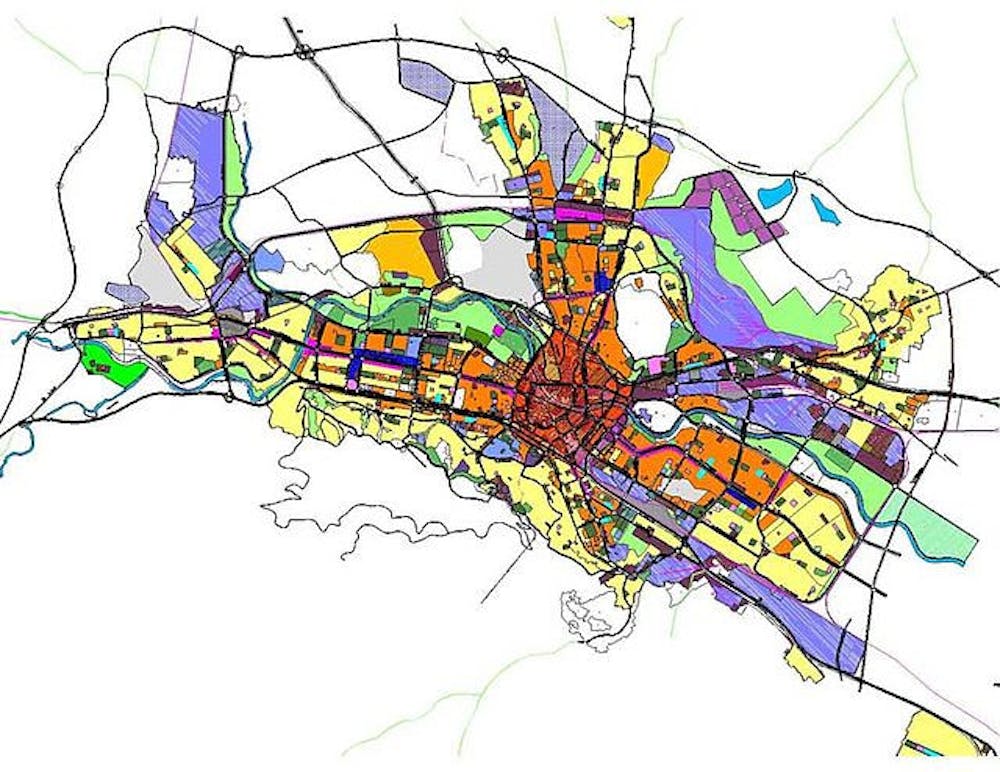In February 2024, I took a stand in front of the Santa Rosa Board of County Commissioners and a room packed with people. My mission was clear: to push for a change in the rules about how land can be used, specifically, a 26-acre plot of land I’m currently developing. I proposed increasing the number of homes allowed from just one per acre to four. This wasn't about making more money; it was about a simple, powerful idea — making homes more affordable for everyone. By allowing us to build 109 homes instead of only 66 on the same land, we could drastically reduce the cost of building each home. This means lower prices for people looking to buy their first home or find a place they can afford.
If we want to address the rising cost of housing in this country, we need to take a hard look at how our own zoning laws and restrictions are the cause of this.
Let's get straight to the point: The U.S. is in the middle of a housing crisis. Buying a home has become a distant dream for too many people. We're short on millions of homes, and if we keep going at our current slow pace, it'll take us forever to catch up. The heart of the problem? Zoning laws. These rules tell us what buildings can or cannot be built on different pieces of land and create zones within communities for a specific use, like homes, shops or factories. My push to change the zoning on that 26-acre tract highlighted a bigger problem. Even though everyone talks about making housing more affordable, the moment you try to actually do something about it, you hit a wall of resistance.
Zoning laws are like a big, invisible fence that keeps affordable housing out. Current zoning laws and land use designations across the country mainly permit the construction of low-density single-family housing. Limiting the allowable density in this way encourages urban sprawl, using up more land than we need and making it harder for everyone to afford a place to live.
The elimination of zoning laws, specifically regarding single-family housing, has been proven to be beneficial for housing affordability. Look at Houston, Texas, for example. The city doesn’t have any of these strict zoning rules and is one of the “most affordable” places to live in the country. Rather than limiting the majority of usable land to strictly low-density, single-family homes on 0.25-acre lots, Houston is much more flexible in allowing buildable land to be fully utilized. This can mean fitting several duplexes on the same lot that would have only fit a single home with zoning restrictions, drastically increasing the available supply and keeping prices low.
Resisting the idea of building more homes in the same space doesn't just make it hard for people to find a place to live; it drives prices up because there aren't enough homes to go around. And the red tape and hoops you have to jump through just to build new homes? In my experience as a housing developer, the requirements for excessive municipal fees and review processes contribute significantly to the time it takes to turn raw land into livable homes. These barriers only add to the cost, which means even higher prices for buyers.
CEO and founder of The Urban Pacific Group of Companies Scott Choppin is a workforce-housing developer in Southern California who summed up the issue of unaffordable housing with one powerful statement: “Complexity is the enemy of progress.” Put simply, the increased zoning regulations and roadblocks in the way of building housing only serve to add to the cost of housing and make these housing projects unaffordable.
In order to effectively take steps toward solving the underlying issues causing our affordable housing crisis, we need to take a hard look at our zoning laws and make changes that will actually promote new and affordable development. If density restrictions are relaxed, and municipalities encourage development, then one of the core issues behind the cost of housing is solved. By allowing more homes to be built on the same amount of land, we can make better use of our space, cut down on building costs and make homes more affordable for everyone. If we're serious about keeping green spaces and making sure there's enough room for everyone, increasing density is the way to go. Right now, we're not building nearly enough homes to meet the demand, and the only way forward is to build smarter and more efficiently.
Alexander Pryor is a freshman majoring in Applied Mathematics and Statistics from Destin, Fla. He is also a housing developer.





